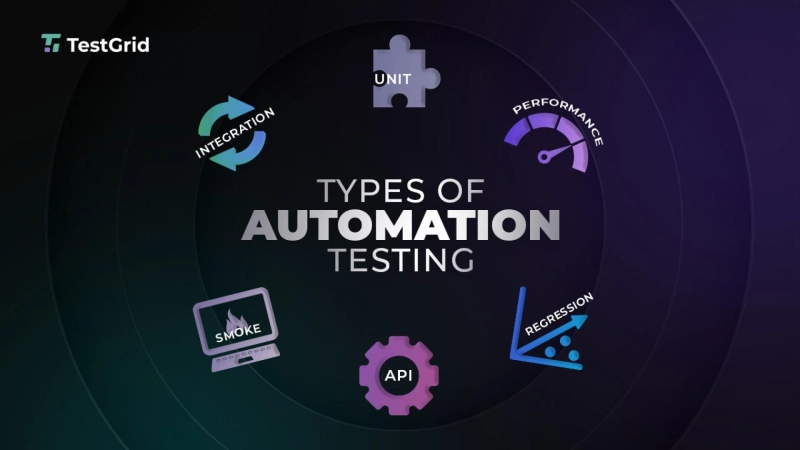In today’s software development landscape, automation testing tools are often hailed as the heroes of speed, efficiency, and scalability. Companies invest heavily in them, job descriptions demand experience with them, and every tester seems eager to become an automate tester. On the surface, automation promises to take the grunt work out of testing—running thousands of test cases at lightning speed, integrating with CI/CD pipelines, and catching bugs earlier than ever.
But here’s the question few dare to ask:
Are these tools truly simplifying the tester’s life, or are they adding new layers of complexity we’re too busy to notice?
Let’s explore both sides of the automation coin and uncover whether the hype surrounding these tools matches the reality.
The Bright Side: Why Automation Testing Tools Are Game-Changers
1. Speed and Efficiency
Manual testing, especially for regression, can be mind-numbingly repetitive. Automating these tests not only saves time but also reduces human error. Once a suite is set up, a team can validate hundreds of features in a fraction of the time it would take manually.
This is particularly true for API testing tools, which can verify backend logic, performance, and security quickly and consistently—far faster than a human ever could.
2. Continuous Integration and Delivery
Modern development is fast-paced. Teams ship code multiple times a day. Without automation, verifying that each change doesn't break existing functionality would be impossible. Automation enables testing to be part of the build pipeline, catching defects before they reach production.
3. Improved Test Coverage
Using automation, testers can achieve broader test coverage. From smoke and sanity tests to full regression suites and load tests, automation ensures that no major area is skipped due to time constraints.
4. Empowering the Team
When used wisely, automation tools don’t replace testers—they empower them. Testers can focus more on exploratory testing, usability issues, and user experience, rather than clicking through the same flows day after day.
For organizations using platforms like Letest AI, automation also brings intelligent reporting, test insights, and AI-driven debugging to help pinpoint issues faster and with more accuracy.
The Dark Side: When Automation Complicates the Process
1. The Setup Is Anything but Simple
Setting up an automation framework is no walk in the park. It requires choosing the right tools, integrating them into the dev environment, writing reusable scripts, and maintaining the whole system over time. For many teams, the upfront cost—in time, skill, and coordination—is enormous.
An automate tester must often act as a developer, DevOps engineer, and QA expert all in one. That’s a lot to ask of any individual or team.
2. Maintenance Is a Constant Burden
Automation scripts are fragile. A minor change in UI or API response can break multiple test cases. What’s worse? Maintaining and updating scripts often becomes a full-time job in itself. As a result, teams sometimes avoid writing new tests because they’re already drowning in broken ones.
This can lead to a false sense of confidence: “All tests are green,” even though the most critical flows are no longer covered.
3. Tool Overload
There’s no shortage of automation testing tools and API testing tools in the market—Selenium, Cypress, Postman, JMeter, Rest Assured, Playwright, TestCafe, and more. But this abundance creates a new problem: choice paralysis.
Different teams may adopt different tools, leading to fragmented test strategies and duplicated efforts. Worse, when tools are selected without a clear strategy, they can become roadblocks instead of enablers.
4. Not Everything Should Be Automated
Not all tests are good candidates for automation. Visual validations, user experience flows, and exploratory testing require human judgment. Trying to automate everything leads to wasted effort and brittle tests.
Some automate testers fall into the trap of “automating for the sake of automation,” focusing on quantity over quality—writing hundreds of scripts that don’t actually test anything meaningful.
So, Is Automation Really Making Things Easier?
The answer isn’t black or white. Automation, when used thoughtfully, absolutely makes testing faster, more scalable, and more reliable. But it’s not a magic bullet. Without proper planning, resources, and ongoing investment, automation can quickly turn into a liability.
Think of it like this: a power tool can make construction faster, but it still needs a skilled worker behind it. Similarly, automation testing tools require experienced testers, a strong strategy, and the wisdom to know what should (and shouldn’t) be automated.
Organizations that succeed with automation are the ones that:
- Choose tools that fit their specific needs and tech stack
- Invest in training and upskilling testers
- Strike a balance between automation and manual testing
- Continuously review and refactor their test suites
- Use intelligent platforms like Letest AI to monitor and optimize test performance
Conclusion: It’s Complicated—But Worth It
Automation testing tools have transformed how we approach software quality. They’re powerful, efficient, and increasingly essential in today’s fast-paced environment. But they’re not simple plug-and-play solutions.
To truly benefit from automation, teams must treat it as a long-term investment—one that demands strategy, discipline, and collaboration across QA, development, and DevOps.
So, are automation tools making testing easier?
Yes—but only for those willing to do the hard work first.


